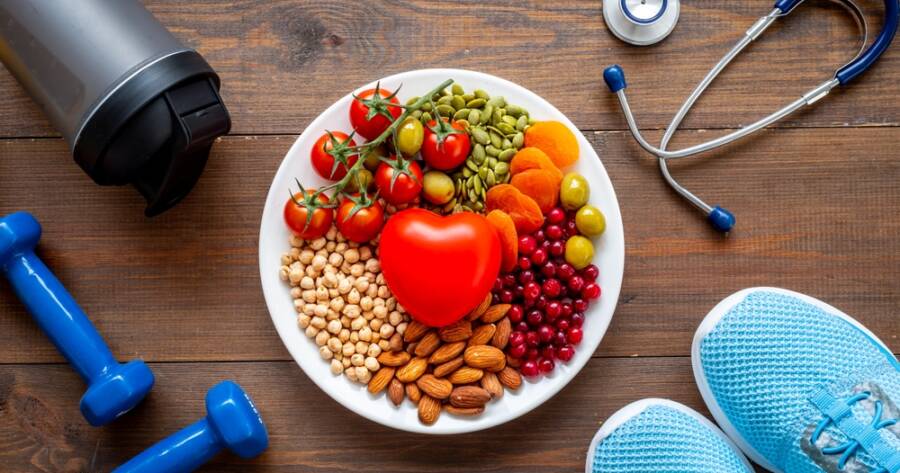Cholesterol plays a crucial role in the body’s overall functioning, but not all cholesterol types are created equal. One type, VLDL cholesterol, can significantly influence heart health. Understanding VLDL cholesterol, its role, and its potential effects on the body is essential.
Understanding VLDL Cholesterol
VLDL (very-low-density lipoprotein) cholesterol is one of several types of lipoproteins that transport fats through the bloodstream. Lipoproteins are particles made of fat (lipid) and protein, and their primary function is to move cholesterol and triglycerides (a type of fat) throughout the body. While low-density lipoprotein (LDL) and high-density lipoprotein (HDL) cholesterol are more widely known, VLDL plays an equally important, albeit lesser-discussed, role.
VLDL is primarily responsible for transporting triglycerides, another type of fat, from the liver to tissues throughout the body. Triglycerides are essential for energy storage, but an excess of them can lead to a variety of health concerns. While VLDL is necessary for carrying these fats, elevated levels can lead to the buildup of cholesterol in artery walls, which may contribute to heart disease and other vascular conditions over time.
The Role of VLDL in Cholesterol Balance
Cholesterol exists in various forms in the body, and each type serves different purposes. VLDL is particularly involved in moving triglycerides, which are converted into energy for cells. However, when there is too much VLDL cholesterol in the blood, the body can struggle to manage these fat levels effectively, potentially increasing the risk of cardiovascular issues.
The process works as follows: after VLDL particles deliver triglycerides to cells, they become LDL particles (often referred to as “bad” cholesterol). LDL then carries cholesterol to various parts of the body, which can lead to plaque formation in the arteries if the cholesterol accumulates. Plaque buildup can narrow and stiffen the arteries, increasing the risk of atherosclerosis, a condition that can lead to heart attacks and strokes.
It’s important to note that not everyone with elevated VLDL levels will experience negative effects, but it’s one risk factor in the broader context of cardiovascular health.
Factors That May Influence VLDL Levels
Several factors can affect the levels of VLDL cholesterol in the body, many of which are modifiable through lifestyle changes. Genetics, diet, and physical activity are key contributors to VLDL levels. Here are some elements that may influence VLDL cholesterol:
- Dietary Habits: A diet high in saturated fats, refined sugars, and processed carbohydrates can increase VLDL levels. These types of foods tend to raise triglyceride levels in the blood, which prompts the liver to produce more VLDL particles to transport the excess fats.
- Physical Activity: Regular exercise may help lower VLDL cholesterol by promoting the breakdown of triglycerides. Exercise can also improve the overall lipid profile, reducing LDL and increasing HDL levels.
- Weight Management: Excess body fat, especially around the abdomen, is often linked to higher VLDL levels. Maintaining a healthy weight through a balanced diet and physical activity can play a significant role in managing VLDL cholesterol.
- Underlying Medical Conditions: Certain health conditions, like insulin resistance, diabetes, and metabolic syndrome, are often associated with increased VLDL cholesterol. These conditions affect how the body processes fats and sugars, potentially leading to higher levels of triglycerides and VLDL in the blood.
How VLDL Cholesterol May Affect Heart Health
The most concerning potential effect of elevated VLDL cholesterol is its contribution to cardiovascular disease. VLDL particles, much like LDL cholesterol, can contribute to plaque buildup in the arteries, leading to atherosclerosis. This condition is characterized by narrowed and hardened arteries, which can restrict blood flow and increase the risk of heart attacks, strokes, and peripheral artery disease.
However, the exact relationship between VLDL cholesterol and heart disease isn’t fully understood, and it’s important to recognize that high VLDL levels are just one of several risk factors. Many other variables, such as genetics, overall cholesterol levels, blood pressure, and lifestyle choices, will also influence an individual’s risk of heart disease.
Researchers suggest that lowering VLDL levels could potentially benefit heart health, but there is no one-size-fits-all solution. Some individuals with elevated VLDL levels may not develop heart issues, while others with lower levels might still be at risk due to other factors.
Managing VLDL Cholesterol Levels
If a healthcare provider determines that VLDL cholesterol levels are too high, they may recommend lifestyle adjustments or medical interventions. It’s often possible to reduce VLDL levels through natural means, although medication may be required in some cases.
- Dietary Changes: Reducing intake of saturated fats, trans fats, and refined carbohydrates is a common recommendation. Increasing fiber intake, particularly from fruits, vegetables, and whole grains, may also help lower VLDL levels. Omega-3 fatty acids, found in fatty fish like salmon, can be beneficial for reducing triglycerides, which in turn may lower VLDL levels.
- Exercise: Regular aerobic exercise, such as walking, cycling, or swimming, can help reduce triglyceride levels, which may lead to lower VLDL production in the liver.
- Medication: In cases where lifestyle changes alone aren’t sufficient, a healthcare provider might prescribe medications such as statins, fibrates, or omega-3 supplements. These medications can help reduce VLDL and triglyceride levels, though their effectiveness varies from person to person.
It’s essential to have a conversation with a healthcare provider before making significant changes to diet, exercise, or medications. Each individual’s needs and risks are different, and a tailored approach is necessary for managing cholesterol levels.
Learn More Today!
VLDL cholesterol plays an important role in transporting triglycerides through the body, but elevated levels can be a potential risk factor for heart disease. While lifestyle changes like diet and exercise may help lower VLDL levels, other factors such as genetics and underlying health conditions can also influence cholesterol balance. Understanding your VLDL cholesterol levels and taking appropriate steps, when necessary, can be a key part of maintaining heart health.
